Putting players in the right positions is just the beginning; the next step is to get them to play roles that fit your plan. A player positions guide for Football Manager.
Updated for FM 2023 and FM24
Do you understand what your Segundo Volante, Regista, Carrilero, and Mezzala are?
Don’t worry; this complete guide assists you in each and every role.
Which position should you assign your player to?
Indeed, even just coming up with a tactic is difficult than one may think!
How do Roles Appear?
It is pretty simple to determine how effective a player is in their potential roles in Football Manager 2023.
A pop-up box with multiple shaded circles adjacent to the roles appears when a player role is selected.
The player does better in that role when the circle is greener (fuller), and conversely, when the circle is more red (less full), the player performs worse.
So how can this be changed to improve a player?
A player can learn a new role through training, development, tactics, and game time can a player learn a new role.
(1) Goalkeeper Roles
1.1 Goalkeeper
Explained The Goal Keeper role:
The Goalkeeper role is having your keeper’s main focus on making saves from shots and collecting crosses. Essentially your keeper is the last line of defense and is the “traditional” keeper. Despite being traditional, depending on their attributes they can still play key passes and have excellent distribution.
| Instructions | None | ||
| Natural playing styles | |||
Roles Of Goal Keeper:
- Defend – There is only one role and that is to stop goals going in. Simple and straightforward, defend the net.
1.2 Sweeper Keeper
Explained The Sweeper Goal Keeper role:
Chance Prevention: Control the space behind the defensive back line.
This Goalkeeping role is a mixture between being a standard keeper and a Libero in essence. They will clean up balls from out wide or come out far; potentially even outside their box to play as an extra player or to initiate passes and start counter-attacks with direct through balls. A sweeper keeper does not necessarily mean a brilliant distributor – it means that they can come out quickly and clean up balls which then puts them in an advantageous position to restart play, including long clearances.
Roles Of Sweeper Goal Keeper:
- Defend duty – The keeper will play a lot more cautiously but still try to start attacking or counter-attacking plays. They do not venture too far out of their box when in possession.
- Support duty – The keeper will stray just outside their penalty box and look to be more influential in starting plays or counter-attacking measures.
- Attack duty – A very “brave” keeper who will travel far outside their area and be heavily involved with the ball at their feet.
Player Instructions of Sweeper Goal Keeper:
- Support and Attack duty – Take More Risks
- Attack duty – Dribble More
Hidden player instructions: rush out more, use more creative freedom
(2) Defending Roles
2.1 Wide Centre-Back
Explained The Wide Center-Back role:
The main duty of this role is to stop the opponent’s offense and clear the ball from danger. Unlike standard central defenders, however, the Wide Centre-Back is encouraged to stay wide in position and support the midfield like a full back.
Roles Of Wide Center-Back:
- Defend – The player is more like a traditional centre-back in a back five. They will provide support in wide areas at times, but from deep. Less likely to overlap or under-lap and more likely to provide a diagonal backwards passing option.
- Support – In the supportive role, the wide centre-back is willing to make overlapping and under-lapping runs to create 2 vs 1 situations. In this essence, they play more of a “fullback” role in supporting the midfield.
- Attack – With an attack duty, the player is willing to make regular overlapping and under-lapping runs to create 2 vs 1 situations, and also has a higher tendency to dribble with the ball.

2.2 Central Defender
Explained The Central Defender role:
Main job is to clearing the ball from danger when necessary includes being good on the feet and keeping possession. In some tactics this means being effective with your feet and maintaining control.
Roles of Central Defender:
- Defend duty – The defender will be more of a “traditional” defender with this role. They will be with their defensive partner(s) in working to break up attacks, preventing the ball from going into the box and marking opposition as a part of your tactic.
- Stopper duty – The stopper is the defender who will step up a bit more and close down players, marking earlier in the defensive plays.
- Cover duty – This role will make your defender play more as a sweeper, they will drop back a bit further then your defensive partner(s) and sweep up balls and mark overlapping players (has to be made specific with tactics).
Player Instructions of Central Defender:
- Dribble Less, Shoot Less Often
- Defend duty – Hold Position
- Stopper duty – increase pressing intensity
- Cover duty – decrease pressing intensity
Hidden player instructions of Central Defender:
- Stopper duty – Hold Position (but move into a more advanced position to close down)
- Cover duty – Hold Position (but move into a deeper position to sit off)
Player Traits of Central Defender:
- Complementary player traits: Refrains From Taking Long Shots, Runs With Ball Rarely, Stays Back At All Times
- Contrasting player traits: Brings Ball Out Of Defence, Gets Forward Whenever Possible, Knocks Ball Past Opponent, Likes To Beat Man Repeatedly, Plays One-Twos, Runs With Ball Often, Runs With Ball Through Centre, Shoots From Distance, Tries To Play Way Out Of Trouble, Tries Tricks
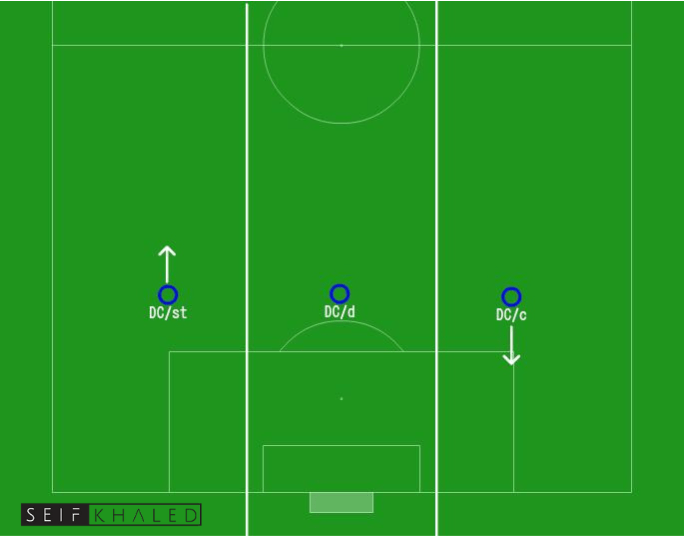
2.3 Libero
Explained The Libero role:
A libero is a defender who plays behind the rest of the back line, covering and sweeping across the spaces behind other defenders.
After a reclaim, the job expanded to include passing forwards – frequently to launch a counter-attack – and eventually driving into midfield with the ball or running forward off the ball to initiate an attack.
One fantastic advantage of this duty is that it allows an additional man to be further back to handle defensive blunders and take possession of faulty or lost balls.
Roles of Libero:
- Support duty – When your team is in possession and looking to start attacking play, the libero will step into a midfield role.
In essence, a deep lying playmaker. - Attack duty – With the Attack duty on, the libero has nearly unlimited freedom to move forward and present a goal scoring threat either in the box or from a distance.
Player Instructions of Libero:
- Decrease pressing intensity, Take More Risks
- Attack duty – Get Further Forward, Dribble More, Shoot More Often
Hidden player instructions of Libero:
- Move into a deeper position to sit off, use more creative freedom
- Support duty – carry the ball more
Player Traits of Libero:
Complementary player traits of Libero:
- Brings Ball Out Of Defence, Dictates Tempo, Likes to Switch Ball To Other Flank, Runs With Ball Through Centre, Stops Play, Tries Killer Balls Often
- Attack duty – Arrives Late In Opponents’ Area, Gets Forward Whenever Possible, Gets Into Opposition Area, Knocks Ball Past Opponent, Plays One-Twos, Runs With Ball Often, Shoots From Distance, Tries To Play Way Out Of Trouble, Tries Tricks
Contrasting player traits of Libero:
- Dwells On Ball, Plays No Through Balls, Plays Short Simple Passes, Runs With Ball Rarely
- Attack duty – Comes Deep To Get Ball, Likes Ball Played Into Feet, Refrains From Taking Long Shots, Stays Back At All Times


2.4 Ball Playing Defender
Explained The Ball Playing Defender role:
This is the more prevalent role in modern football, with defenders being required to play out of the back and be excellent in passing.
They will still be responsible for defending and stopping opponent assaults, but they are encouraged to play long balls or move forward with splitting balls and passes.
This is really key for counter attacks.
Roles Of Ball Playing Defender:
- Defend duty – The defender will not venture forward with this role; they will continue to execute defensive tasks and play passes out of the back, but their position will be in line with the defensive line or their partner.
- Stopper duty – Like a conventional Central Defender, they will close down players before entering the box. This is fantastic for ball-players as if received or intercepted, they are a little more advanced to pass out – but can be caught out if not careful.
- Cover duty – In this role, the defender drops deeper and plays passes across the back, to the wings, or from behind the defensive line.
Player Instructions Of Ball Playing Defender:
- Slightly increase passing directness, Take More Risks
- Defend duty – Hold Position
- Stopper duty – increase pressing intensity
- Cover duty – decrease pressing intensity
Hidden player instructions Of Ball Playing Defender:
- Carry the ball more, use more creative freedom
- Stopper duty – Hold Position (but move into a more advanced position to close down)
- Cover duty – Hold Position (but move into a deeper position to sit off)
Player Traits Of Ball Playing Defender:
- Complementary player traits: Brings Ball Out Of Defence, Dictates Tempo, Likes To Switch Ball To Other Flank, Runs With Ball Through Centre, Stays Back At All Times, Stops Play, Tries Killer Balls Often, Tries Long Range Passes
- Contrasting player traits: Dwells On Ball, Gets Forward Whenever Possible, Plays No Through Balls, Plays One-Twos, Plays Short Simple Passes, Runs With Ball Rarely

2.5 No-Nonsense Centre Back
Explained No-Nonsense Centre Back role:
The “old-school” defence role, with only one goal in mind: clear it and stop attacks.
The purpose of the defender assigned to this job is to win the ball and clear it up the pitch while taking no risks.
Even if the risk is low, these clearances may involve sending it to the stands rather than looking for a pass.
Roles Of No-Nonsense Centre Back:
- Defend duty – As with the Central Defender, they must keep in line with their defensive partner and break up attacks.
- Stopper duty – They will charge ahead, attempting to stop the ball or close down players before entering the penalty box.
- Cover duty – Will drop a little deeper to catch any long balls.
A No-Nonsense Centre Back is a type of defender who prioritizes simplicity and effectiveness in their defensive play. They focus on defending their team’s goal and disrupting the opposition’s attacks with a minimum of fuss. Some of the key roles and responsibilities of a No-Nonsense Centre Back include:
- Defensive solidity: A No-Nonsense Centre Back is primarily responsible for providing a solid defensive foundation for their team. They are expected to be physically strong, aggressive, and dominant in the air. They must be able to read the game well and make timely interceptions and tackles to prevent the opposition from scoring.
- Clearing the ball: A No-Nonsense Centre Back is not afraid to clear the ball away from danger when necessary. They will not take unnecessary risks in their defensive play and will prioritize getting the ball out of danger as quickly as possible.
- Leadership: No-Nonsense Centre Backs are often leaders in their team’s defense, providing a vocal and commanding presence on the field. They must be able to communicate effectively with their teammates and organize the team’s defensive shape.
- Winning aerial duels: No-Nonsense Centre Backs often excel in winning aerial duels against opposing attackers. They must be able to time their jumps well and use their physical strength to outmuscle their opponents.
- Limiting mistakes: A No-Nonsense Centre Back is expected to limit their mistakes and not take unnecessary risks in their defensive play. They must be able to make simple and effective decisions that prioritize their team’s defensive stability over any potential attacking opportunities.
Player Instructions No-Nonsense Centre Back:
- Increase passing directness, Dribble Less, Shoot Less Often, Take Fewer Risks
- Defend duty – Hold Position
- Stopper duty – increase pressing intensity
- Cover duty – decrease pressing intensity
Hidden player instructions No-Nonsense Centre Back:
- Use more tactical discipline
- Stopper duty – Hold Position (but move into a more advanced position to close down)
- Cover duty – Hold Position (but move into a deeper position to sit off)
Player Traits No-Nonsense Centre Back:
- Complementary player traits: Plays No Through Balls, Refrains From Taking Long Shots, Runs With Ball Rarely, Stays Back At All Times, Tries Long Range Passes
- Contrasting player traits: Brings Ball Out Of Defence, Dictates Tempo, Gets Forward Whenever Possible, Knocks Ball Past Opponent, Likes To Beat Man Repeatedly, Likes To Switch Ball To Other Flank, Plays One-Twos, Plays Short Simple Passes, Runs With Ball Often, Runs With Ball Through Centre, Shoots From Distance, Tries Killer Balls Often, Tries To Play Way Out Of Trouble, Tries Tricks

2.6 Inverted Full-Back (IFB) – NEW IN FM24
Explained Inverted Full-Back role:
Inverted fullbacks are a specialized type of fullback who start their positioning wider on the field, which is the typical starting position for fullbacks, but then transition towards the inside channel, half-space, or central area. While the act of occupying these more central spaces is often considered the central aspect of an inverted fullback’s role, it’s important to recognize that this is an oversimplified perspective.
During defensive transitions, they may temporarily remain in central positions before eventually retreating to the back line and defending on the outside of the two center-backs, as traditional fullbacks typically do. Wing-backs operating in a back five formation can also exhibit similar movements, shifting inside during the team’s build-up play.
Furthermore, various player roles have evolved and become more dynamic, providing greater flexibility and dynamism to your tactical approach and team performance on matchdays.
Popularised by Man City’s Kyle Walker, the IFB functions as a traditional Full-Back when defending but in possession transitions to become a third central defender.

Who are the best inverted full-backs?
- Philipp Lahm
- João Cancelo
- Trent Alexander-Arnold
Which other players are examples of inverted full-backs?
- David Alaba for Bayern Munich under Guardiola.
- Kyle Walker for Manchester City under Guardiola.
- Oleksandr Zinchenko for Arsenal under Mikel Arteta.
- Josip Juranovic for Celtic under Ange Postecoglou.
(3) Midfield Roles
3.1 Defensive Midfielder [DESTROYER]
Explained Defensive Midfielder role:
As a midfielder, their primary responsibilities include safeguarding the defensive line while the team is not in possession, and providing assistance to the midfield and forward players during possession. Additionally, they play a critical role in retaining possession and setting the pace of play to enable the defense and offense to regroup or maneuver into position.
Roles Of Defensive Midfielder:
- Defend duty – They will stay more defensive, similar to being an extra central defender but stay ahead of the defensive line and look to recycle possession efficiently.
- Support duty – With this role, the defensive midfielder will be more in line with the midfield, supporting attacking moves but staying a touch further back – almost in a screening or safety role to be on guard of a counterattack.
Player Instructions of Defensive Midfielder:
- Defend duty – decrease pressing intensity, Hold Position, Dribble Less, Shoot Less Often.
Player Traits Of Defensive Midfielder:
- Complementary player traits:
Defend duty – Refrains From Taking Long Shots, Runs With Ball Rarely, Stays Back At All Times. - Contrasting player traits:
Defend duty – Arrives Late In Opponents’ Area, Gets Forward Whenever Possible, Gets Into Opposition Area, Knocks Ball Past Opponent, Likes To Beat Man Repeatedly, Plays One-Twos, Runs With Ball Often, Runs With Ball Through Centre, Shoots From Distance, Tries To Play Way Out Of Trouble, Tries Tricks.
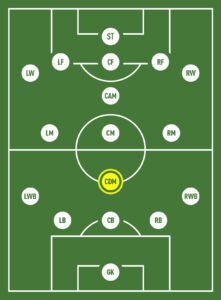
Here is a diagram of the defensive midfielders passing options in a 4-3-3 Formation:
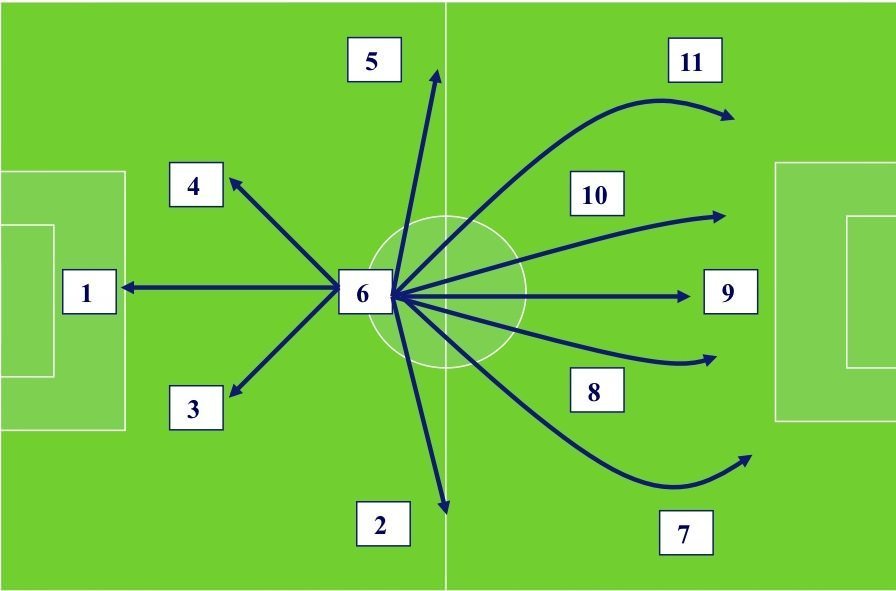
Why is Defensive Midfielder position called Destroyer?
The Defensive Midfielder position is sometimes referred to as the “Destroyer” because it involves disrupting the opposing team’s attacks and breaking up their play, often through tackles and interceptions. The term “Destroyer” emphasizes the player’s role in stopping the opposition’s progress and preventing them from creating goal-scoring opportunities.
3.2 Deep Lying Playmaker
Explained Deep Lying Playmaker role:
This player operates in the areas between the defense and midfield, with the objective of initiating attacking moves by distributing the ball to players or spaces further up the field. While their primary focus is on creativity, they must also fulfill their defensive responsibilities. In essence, they function as a deep-lying playmaker, utilizing their a creative passer from deep.
Roles Of Deep Lying Playmaker:
- Defend duty – This duty will make the player focus more on the defensive side of the game and support attacks but mostly just from passes. Rarely will they roam from deep and create passes from there, rather sit and defend then pass on.
- Support duty – Fulfilling their defensive duty but will bring the ball out of the defense to open more opportunities to pass or create an opportunity. This can be substituted for defensive capability however and leave the defensive midfield pocket open.
Player Instructions Of Defensive Midfielder:
- Hold Position, Shoot Less Often
- Defend duty – decrease pressing intensity, Dribble Less
- Support duty – Take More Risks
Hidden player instructions Of Deep Lying Playmaker:
- Collect the ball more, use more creative freedom, focus play (this role is a playmaker focal role which instructs a player’s teammates to pass to him more often)
Player Traits Of Deep Lying Playmaker:
- Complementary player traits Deep Lying Playmaker:
- Comes Deep To Get Ball, Dictates Tempo, Likes Ball Played Into Feet, Refrains From Taking Long Shots, Stays Back At All Times, Stops Play.
- Defend Duty – Runs With Ball Rarely.
- Support Duty – Likes To Switch Ball To Other Flank, Tries Killer Balls Often
- Contrasting player traits Deep Lying Playmaker:
- Arrives Late in Opponents’ Area, Dwells On Ball, Gets Forward Whenever Possible, Gets Into Opposition Area, Plays No Through Balls, Plays One-Twos, Plays Short Simple Passes, Shoots From Distance.
- Defend Duty – Knocks Ball Past Opponent, Likes To Beat Man Repeatedly, Runs With Ball Often, Runs With Ball Through Centre, Tries To Play Way Out Of Trouble, Tries Tricks.
- Support Duty – Plays No Through Balls.

3.3 Ball Winning Midfielder:
Explained Ball Winning Midfielder role:
The primary responsibility of the ball-winning midfielder is to press the opposing team and regain possession of the ball.
Roles Of Ball Winning Midfielder:
- Defend duty – With this role, the player will look to win the ball back in front of the defensive line and quickly pass it on to another player.
- Support duty – The player will press higher, looking to win the ball higher up the pitch and be more supportive in counter attacking or retaining possession.
Player Instructions Of Ball Winning Midfielder:
- Significantly increase pressing intensity, Tackle Harder
- Defend duty – Hold Position, Dribble Less, Shoot Less Often, Take Fewer Risks
Hidden player instructions of Ball Winning Midfielder:
- Use more tactical discipline
Player Traits Of Ball Winning Midfielder:
Complementary player traits:
- Dives Into Tackles
- Defend duty – Plays No Through Balls, Plays Short Simple Passes, Refrains From Taking Long Shots, Runs With Ball Rarely, Stays Back At all Times
Contrasting player traits:
- Dictates Tempo
- Defend duty – Arrives Late In Opponents’ Area, Gets Forward Whenever Possible, Gets Into Opposition Area, Knocks Ball Past Opponent, Likes To Beat Man Repeatedly, Likes To Switch Ball To Other Flank, Plays One-Twos, Runs With Ball Often, Runs With Ball Through Centre, Shoots From Distance, Tries Killer Balls Often, Tries To Play Way Out Of Trouble, Tries Tricks

3.4 Anchor Man:
Explained Anchor Man role:
This player’s primary responsibility is to occupy a central position between the defense and midfield. Their main objective is to retrieve the ball, intercept offensive plays, and when they regain possession, distribute the ball to a more creative teammate. This player’s positioning is relatively fixed, as they do not typically advance too far forward nor drop back as a Libero or extra center-back. Consequently, they are not often called upon to press opposing players who are too far forward.
The Anchor Man, often nicknamed the ‘Water Carrier’, is primarily responsible for occupying the space between the defense and midfield. Their primary duties include intercepting attacking moves, retrieving the ball, and distributing it with simple passes to more creative teammates.
Given their crucial role in anchoring the defense, this player typically avoids straying too far from their position to press the opposition or support the more advanced players on the team.
roles Anchor Man:
- Defend duty – There is just one role for this position, and it makes sense considering their role. They are best suited in a structured system who have the straight-forward task of anchoring the defense, not being too creative nor dribble – essentially as risk free as possible.
Player Instructions of Anchor man:
- Decrease pressing intensity, Hold Position, Dribble Less, Shoot Less Often, Take Fewer Risks
Player Traits of Anchor man:
- Complementary player traits: Plays No Through Balls, Plays Short Simple Passes, Refrains From Taking Long Shots, Runs With Ball Rarely, Stays Back At All Times
- Contrasting player traits: Arrives Late In Opponents’ Area, Gets Forward Whenever Possible, Gets Into Opposition Area, Knocks Ball Past Opponent, Likes To Beat Man Repeatedly, Likes To Switch Ball To Other Flank, Plays One-Twos, Runs With Ball Often, Runs With Ball Through Centre, Shoots From Distance, Tries Killer Balls Often, Tries To Play Way Out Of Trouble, Tries Tricks.

3.5 Half Back:
Explained The Half Back role:
The Half Back position can be described as a hybrid role, combining features of both an aggressive sweeper and a defensive midfielder. In possession, the Half Back tends to drop back deeper than a traditional defensive midfielder, with the objective of providing an option for efficiently recycling possession and guarding against counter attacks.
Roles of half back:
- Defend duty – This is yet another position with a primarily defensive role, where the player’s main responsibility is to assist in the team’s defense and they typically do not venture forward into attacking positions.
Player Instructions of half back:
- Decrease pressing intensity, Hold Position, Dribble Less
Hidden player instructions of Half Back:
- drop deep more
Player Traits of Half Back:
- Complementary player traits:
Comes Deep To Get Ball, Likes Ball Played Into Feet, Runs With Ball Rarely, Stays Back At All Times - Contrasting player traits:
Arrives Late In Opponents’ Area, Gets Forward Whenever Possible, Gets Into Opposition Area, Knocks Ball Past Opponent, Likes To Beat Man Repeatedly, Plays One-Twos, Runs With Ball Often, Runs With Ball Through Centre, Likes To Play Way Out Of Trouble, Tries Tricks.


3.6 Regista:
Explained The Regista role:
The Regista is a midfield role that is typically utilized in possession-oriented systems which employ a high-pressing strategy. This position is a more attacking variant of the Deep Lying Playmaker and provides the player with complete freedom to dictate the team’s play from deep positions. The Regista is a dynamic and unpredictable creative outlet who constantly seeks to maintain intense pressure on the opposition by looking for new opportunities to create chances for their more advanced teammates in goal-scoring positions.
Roles of Regista:
- Support duty – The Support role is a fitting description of the Regista, who operates as an aggressive supporter from the deep midfield position. The Regista is essentially the ideal deep counter-playmaker, constantly working to create opportunities, space, and passing options for their more forward teammates.
Player Instructions of Regista:
- Roam From Position, Take More Risks
Hidden player instructions of Regista:
- Collect the ball more, use more creative freedom, focus play (this role is a playmaker focal role which instructs a player’s teammates to pass to him more often)
Player Traits of Regista:
- Complementary player traits: Comes Deep To Get Ball, Dictates Tempo, Likes Ball Played Into Feet, Likes To Switch Ball To Other Flank, Stops Play, Tries Killer Balls Often
- Contrasting player traits: Dwells On Ball, Gets Forward Whenever Possible, Gets Into Opposition Area, Plays No Through Balls, Plays Short Simple Passes, Stays Back At All Times

3.7 Roaming Playmaker:
Explained The Roaming Playmaker role:
This player’s strategy involves receiving the ball from a distant location and advancing it towards the opponent’s goal by utilizing skillful runs, precise passes, and imaginative tactics. Their objective is to move towards the region outside the opposing team’s penalty box in order to generate scoring opportunities or attempt a shot on goal.
Roles Of Roaming Playmaker:
- Support duty – The primary responsibility of the Support role is to act as a Roaming Playmaker, providing support for the attacking players across the entire midfield. Their role involves facilitating forward-thinking play and contributing to the team’s offensive efforts.
Player Instructions Of Roaming Playmaker:
- Roam From Position, Take More Risks
Hidden player instructions Of Roaming Playmaker:
- Collect the ball more, carry the ball more, use more creative freedom, make more surging forward runs, track back more, focus play (this role is a playmaker focal role which instructs a player’s teammates to pass to him more often).
Player Traits of Roaming Playmaker:
- Complementary player traits: Arrives Late In Opponents’ Area, Comes Deep To Get Ball, Dictates Tempo, Likes Ball Played Into Feet, Likes To Switch Ball To Other Flank, Runs With Ball Through Centre, Stops Play, Tries Killer Balls Often
- Contrasting player traits: Dwells On Ball, Gets Forward Whenever Possible, Gets Into Opposition Area, Plays No Through Balls, Plays Short Simple Passes, Runs With Ball Rarely, Stays Back At All Times

3.8 Segundo Volante:
Explained The Segundo Volante role:
The term “Segundo Volante” literally translates to “Second Steering Wheel”. This position in soccer is primarily defensive in nature, with the player providing support for the attack from a late position. They often carry the ball and make late runs into the attacking area, acting as the “second steering wheel” to support the play. Instead of being the main player, they work best alongside a more central player like an Anchor Man or Ball Winning Midfielder.
Roles of Segundo Volante:
- Support duty – The Segundo Volante aims to provide support to the attacking play, but selectively chooses opportunities to arrive late in the opposition’s penalty area.
- Attack duty – The role of the Segundo Volante involves getting further forward and frequently arriving late in the opposition’s penalty area. They also attempt more shots on goal to increase their attacking contribution.
Player Instructions of Segundo Volante:
- Attack duty – Get Further Forward
Hidden player instructions of Segundo Volante:
- Carry the ball more
- Support duty – make more surging forward runs.
Player Traits of Segundo Volante:
Complementary player traits:
- Arrives Late In Opponents’ Area, Runs With Ball Through Centre
- Attack duty – Gets Forward Whenever Possible, Gets Into Opposition Area, Plays One-Twos
Contrasting player traits:
- Dwells On Ball, Runs With Ball Rarely, Stays Back At All Times
- Attack duty – Comes Deep To Get Ball, Likes Ball Played Into Feet
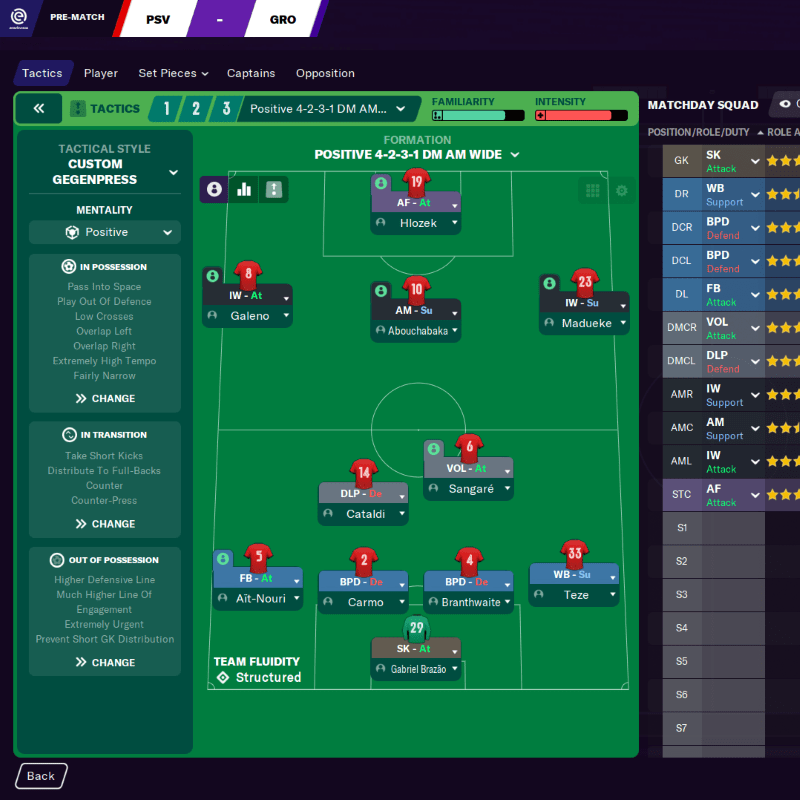
3.9 Central Midfielder:
Explained The Central Midfielder role:
The role of the Central Midfielder is to serve as a versatile and industrious link between the defense and the attack. This position requires the player to perform a range of tasks across the center of the pitch, which is why the Central Midfielder benefits from having both tactical awareness and technical ability. They are expected to provide support for both defensive and attacking play, as needed.
Roles of Central Midfielder:
- Defend duty – This position requires the player to prioritize defensive midfield actions, such as staying deep, tracking opposing midfielders, blocking passing lanes, and controlling the tempo and pace of their team.
- Support duty – This role involves a more balanced approach, with the player contributing to both the attack and defense as needed. They tend to operate in the central area of the pitch and distribute the ball accordingly.
- Attack duty – In this position, the player is expected to move forward into the attacking third and provide support for the forwards.
- Automatic duty – The midfielder will switch between the above roles depending on the team’s overall strategy and mentality.
Player Instructions of Central Midfielder:
- Defend duty – decrease pressing intensity, Hold Position
- Attack duty – Get Further Forward
Player Traits of Central Midfielder:
Complementary player traits:
- Defend duty – Stays Back At All Times
- Attack duty – Gets Forward Whenever Possible, Gets Into Opposition Area, Plays One-Twos
Contrasting player traits:
- Defend duty – Arrives Late In Opponents’ Area, Gets Forward Whenever Possible, Plays One-Twos
- Attack duty – Comes Deep To Get Ball, Likes Ball Played Into Feet, Stays Back At All Times

3.10 Box-to-Box Midfielder:
Explained Box-to-Box Midfielder role:
The role Box To Box Midfielder exhibits a relentless energy that allows him to make significant contributions in both defense and attack. He plays a crucial role in supporting the forwards by advancing forward and even making late runs into the box to receive crosses and create scoring opportunities. Additionally, he is capable of unleashing powerful shots from long distances. On the defensive end, he actively pressures opposing attacking midfielders and assists in safeguarding the defensive line.
Roles of Box-to-Box Midfielder:
- Support duty – The box-to-box midfielder epitomizes the supportive role in a team, being involved in every facet of the game without overstepping boundaries or encroaching on other players’ responsibilities. As a support player, this position has a significant impact on the game’s outcome.
Player Instructions of Box-to-Box Midfielder
- Roam From Position
- Hidden player instructions: make more surging forward runs, track back more
Player Traits of Box-to-Box Midfielder
- Complementary player traits: Arrives Late In Opponents’ Area
- Contrasting player traits: Stays Back At All Times

3.11 Advanced Playmaker:
Explained Advanced Playmaker role:
The Advanced Playmaker’s primary objective is to drop into the gaps between the opposing team’s midfield and defense, creating space for himself to be available for his teammates’ passes. By doing so, he aims to initiate swift counterattacks and transform the team’s defense into a potent attacking force.
Roles of Advanced Playmaker:
- Support duty – the Advanced Playmaker will stay in the hole and look to spray passes to support players and forwards.
- Attack duty – the Advanced Playmaker will look to run at the defensive line from deeper positions, aiming to craft out crossing or through ball opportunities as he moves into the final third.
Player Instructions of Advanced Playmaker
- Shoot Less Often, Take More Risks
- Attack duty – Dribble More
- Hidden player instructions: sit between the lines more, make more lateral runs, collect the ball more, use more creative freedom, focus play (this role is a playmaker focal role which instructs a player’s teammates to pass to him more often)
Player Traits of Advanced Playmaker
Complementary player traits:
- Comes Deep To Get Ball, Dictates Tempo, Does Not Move Into Channels, Likes Ball Played Into Feet, Likes To Switch Ball To Other Flank, Looks For Pass Rather Than Attempting To Score, Refrains From Taking Long Shots, Stops Play, Tries Killer Balls often
- Attack duty – Knocks Ball Past Opponent, Runs With Ball Often, Runs With Ball Through Centre, Tries To Play Way Out Of Trouble, Tries Tricks
Contrasting player traits:
- Attempts Overhead Kicks, Dwells On Ball, Gets Forward Whenever Possible, Gets Into Opposition Area, Likes To Lob Keeper, Moves Into Channels, Plays No Through Balls, Plays Short Simple Passes, Shoots From Distance, Tries First Time Shots
- Attack duty – Runs With Ball Rarely.

3.12 Mezzala:
Explained Mezzala role:
The modern version of the Mezzala involves a central player who prefers to move towards the sides of the pitch and operate within the half-spaces. Essentially, the Mezzala can be seen as a central or half-winger, who primarily defends in an advanced position on the field, with fewer defensive duties compared to other midfielders.
Roles of Mezzala:
- Support – The supportive role sees them work between being a midfield and the “traditional work” along with their role and their contribution further up the pitch.
- Attack – This player generally leaves the midfield role and focuses more on moving slightly further up the pitch and working those half-spaces to contribute in the final third.
Player Instructions of Mezzala
- Get Further Forward, Stay Wider, Move Into Channels, Roam From Position
- Attack duty – Take More Risks
- Hidden player instructions: make more dribbles into channels
Player Traits of Mezzala
Complementary player traits:
- Gets Forward Whenever Possible, Gets Into Opposition Area, Moves Into Channels, Plays One-Twos
- Attack duty – Likes To Switch Ball To Other Flank, Tries Killer Balls Often
Contrasting player traits:
- Comes Deep To Get Ball, Dwells On Ball, Likes Ball Played Into Feet, Runs With Ball Rarely, Stays Back At All Times
- Attack duty – Plays No Through Balls, Plays Short Simple Passes

3.13 Carrilero:
Explained Carrilero role:
The Carrilero, commonly referred to as the ‘shuttler,’ plays a supportive role and is typically deployed as part of a midfield trio or as two central midfielders in a diamond formation. The key responsibility of the Carrilero is to cover the lateral areas of the pitch and connect the defensive midfield with the attacking midfield. Unlike the Box To Box Midfielder, the Carrilero is not expected to shuttle between both boxes but instead, shuttles between different lines of the midfield.
Roles of Carrilero:
- Support – The only role that makes sense, a Carrilero strictly is a supportive player who covers the lines or “railways” in the midfield position. They are deceptive in their play as they are not very noticeable and aren’t a vertical midfield player. They “shuttle” the ball between the two phases of play and support the team in that aspect.
Player Instructions of Carrilero
- Stay Wider
- Hidden player instructions: make more lateral runs
Player Traits of Carrilero
- Complementary player traits: Moves Into Channels
- Contrasting player traits: Comes Deep To Get Ball, Gets Forward Whenever Possible, Gets Into Opposition Area

(4) FLANK Roles
4.1 Wing Back
A wing-back is a position in football that is a variation of a full-back. Unlike a traditional full-back who primarily defends and stays in position, a wing-back has a more attacking role, providing width and support to the team’s attacking play.
A wing-back usually plays on the left or right side of the field, depending on the team’s formation, and is responsible for both attacking and defending. They need to be quick, agile, and have excellent stamina to cover the entire length of the flank. They are required to overlap and cross the ball into the box, creating scoring opportunities< for their teammates. They also need to track back and defend against opposition wingers, preventing crosses and shots.
In modern football, wing-backs are often used in formations that focus on attacking play, such as the 3-5-2 or 5-3-2 formations. Wing-backs can be crucial to a team’s success, providing width and creativity in attack while also helping to solidify the defense.
Roles Of Wing Back:
The role of a wing-back in football is a combination of attacking and defensive responsibilities. Here are some of the key roles and responsibilities of a wing-back:
- Attacking: The wing-back’s primary role is to provide width and support to the team’s attacking play. They need to have good dribbling skills, pace, and stamina to run up and down the flank, providing crosses and creating scoring opportunities for their teammates.
- Overlapping runs: Wing-backs are expected to overlap with their team’s wingers or midfielders, providing an extra option in attack. They need to time their runs well and communicate effectively with their teammates to create space and open up the opposition defense.
- Defending: Wing-backs also have defensive responsibilities, such as marking the opposition wingers, tracking back, and preventing crosses and shots. They need to be good at tackling, blocking shots, and intercepting passes.
- Transition play: Wing-backs play an essential role in transition play, which is the movement of the ball from defense to attack or vice versa. They need to be quick to react and switch between attacking and defending, depending on the situation.
- Communication: Wing-backs need to communicate effectively with their teammates, especially with the center-backs and central midfielders. They need to coordinate their movements and positioning to ensure that the team maintains a solid defensive shape.
Overall, the role of a wing-back is demanding and requires a high level of skill, athleticism, and tactical awareness.
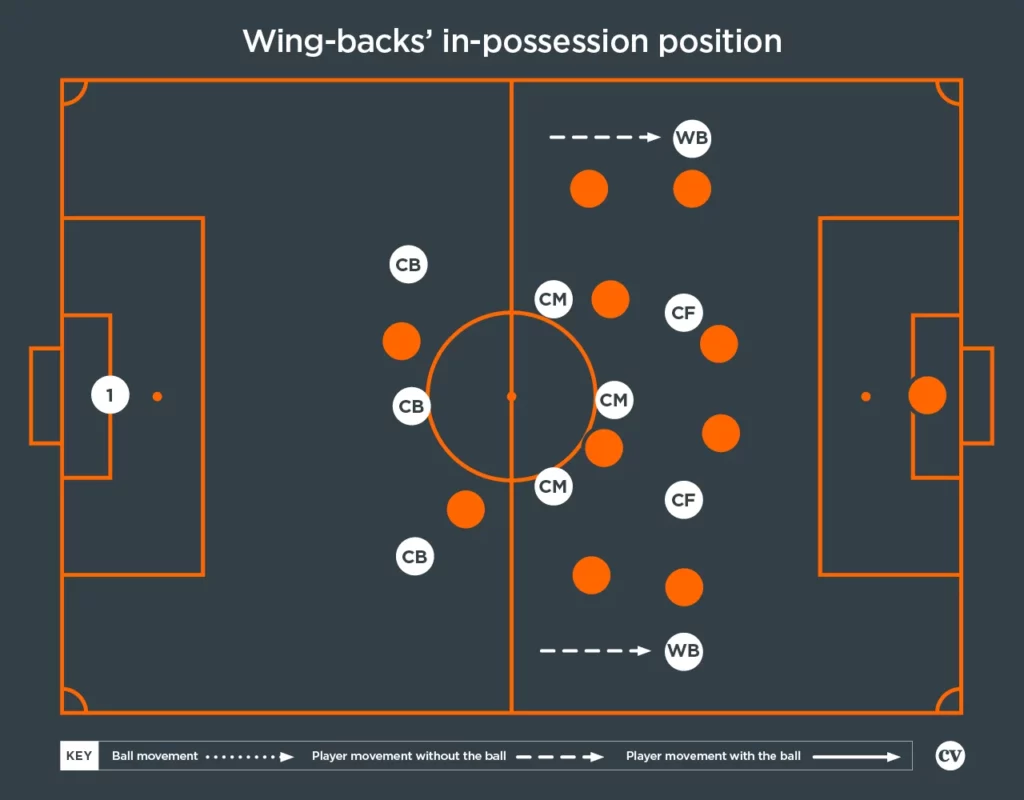

4.2 Full Back
4.3 The complete wing-back
Complete wing-backs are the steroids-addicted cousins of normal wing-backs.
They are expected to perform the same defensive duties as their teammates, but they are also expected to surge forward at any opportunity to maraud down the flank and get involved offensively with crosses or through-balls.
These are exceptionally skilled players that are expected to perform well on both sides of the pitch, with a focus on the attacking side of the game.
Roles Of The Complete Wing Back:
For the role of complete wing-back, you can select a mere two settings:
- Support – Mostly be a supportive role and be smarter in play with their desire to move forward while keeping an eye on their defensive responsibilities.
- Attack – Leave their defensive position and stay a little further back in the final third to compensate for influencing the attacking play in a game.
- Defend – the complete wing back must be able to track back quickly to defend against opposing attackers. They must be able to read the game and anticipate the opposition’s movements in order to make interceptions and tackles. They may also need to provide cover for central defenders or track back to defend against counterattacks.


The movement of several varieties of full wingbacks.
The defender stratum is always on the left, while the wing-back stratum is always on the right.

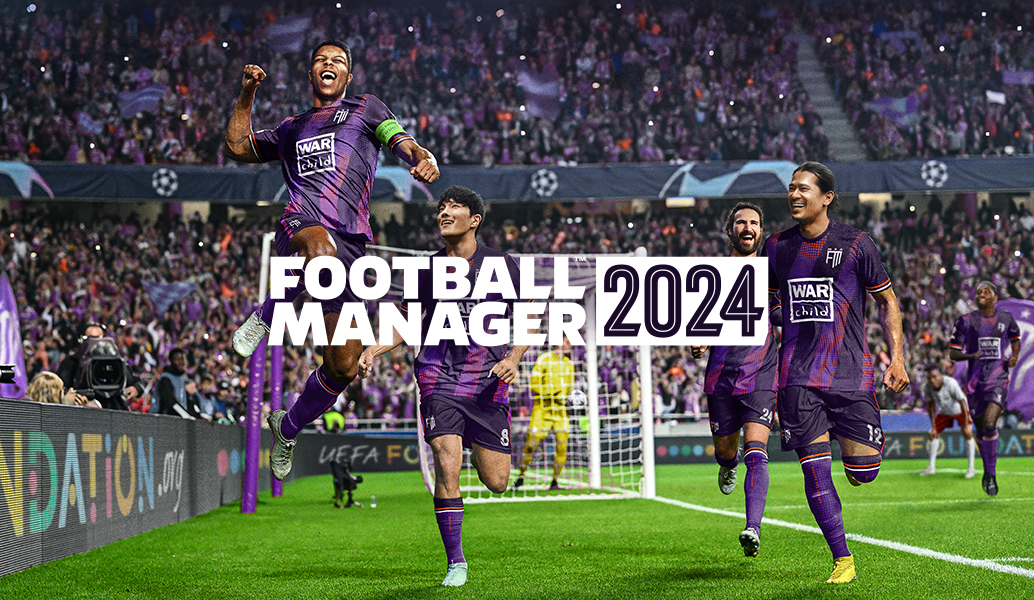
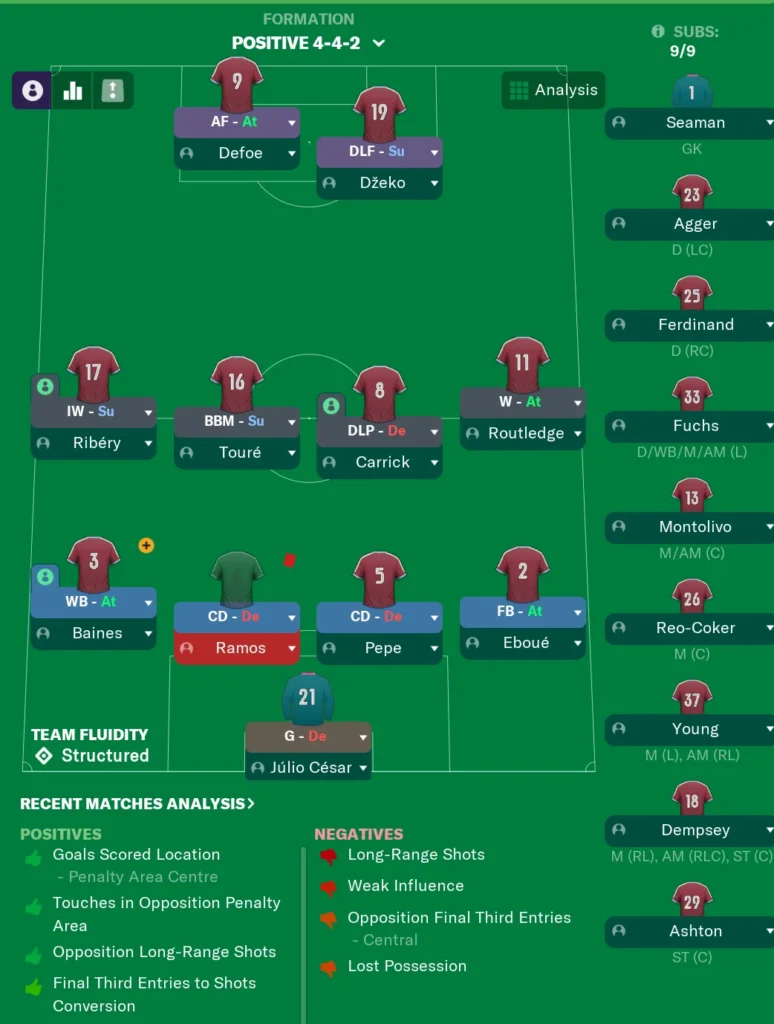
[…] You can learn more about the defensive midfield partnership between Segundo Volante and other midfielders by having a detailed understanding of different player roles. […]